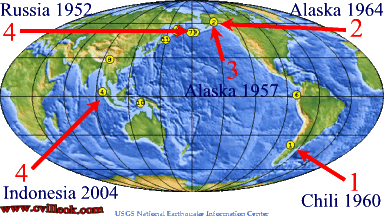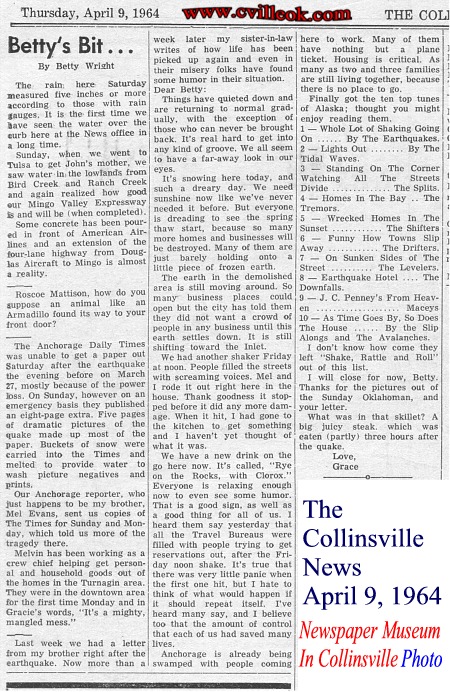
Home
(email questions/comments to wrightted@aol.com).
Ted Wright -- last update 12/27/2004 & 12/30 & 1/13 (Earthquake.html)
www.cvilleok.com
Copyright 2004 -- Collinsville,
Oklahoma
|
Fourth
Largest Earthquake
Dec. 26, 2004 Thousands Killed By Huge Waves in 9 Countries |
|
This web site is brought to you by
the Newspaper
Museum In Collinsville and the other advertisers appearing on these
pages. If you would like to provide content or advertisements ...
call Ted Wright (918) 371-1901 or send email to wrightted@aol.com. |

Preliminary locations of larger aftershocks following the megathrust earthquake show that approximately 1000 km of the plate boundary slipped as a result of the earthquake. Aftershocks are distributed along much of the shallow plate interface and primarily extend northwards of the epicenter to the Andaman Islands.
The worlds largest recorded earthquakes were all megathrust events and occur where one tectonic plate subducts beneath another. These include: the magnitude 9.5 1960 Chile earthquake, the magnitude 9.2 1964 Prince William Sound, Alaska earthquake, the magnitude 9.1 1957 Andreanof, Alaska earthquake, and the magnitude 9.0 1952 Kamchatka earthquake. As with the recent event, megathrust earthquakes often generate large tsunamis that can cause damage over a much wider area than is directly effected by ground shaking near the earthquake's rupture.
|
|
| The 1964 article below (by my Mother with letters from Mel & Gracie Evans) provides some insight from those who rode out that 9.2 earthquake near Anchorage, Alaska. -- Ted |
 |
| From a Reuters Web Story Jan. 13, 2005 |
| "The tsunami killed at least 157,000 people, including 105,000 in Indonesia, 30,000 in Sri Lanka and 15,000 in India. Many of the more than 5,000 killed in Thailand were foreign tourists, a large number of them from Europe." |